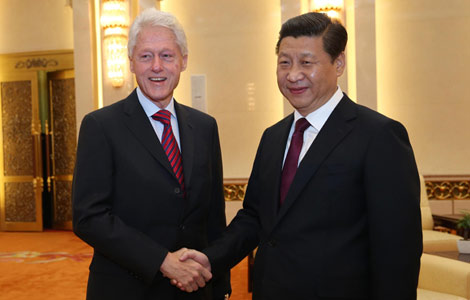
XI'AN - Energy-efficient technologies will be promoted in 20 brick manufacturing plants and 40 villages across China next year, as part of pilot efforts to cut emissions and save energy, said the project's authorities.
It is part of a five-year program for energy efficient buildings in the country's rural areas, which started in May 2010, said Liu Shijun, project officer with the United Nations Development Program (UNDP). He was speaking at a national forum on energy efficient bricks and rural green buildings held in Xianyang, northwest China's Shaanxi Province.
The project is jointly carried out by the UNDP, the Global Environmental Facility (GEF) and China's Ministry of Agriculture. The GEF donates $7 million and the Chinese government provides 45.36 million dollars for the project.
Ten brick manufacturing plants in Xinjiang Uygur autonomous region and Jilin, Gansu, Hebei, Shaanxi, Hunan, Sichuan, Anhui and Zhejiang provinces have benefited from the program. They have developed capacity to produce 625 million energy-efficient bricks per year, said Liu at the two-day seminar which began Monday.
These plants can save 78,000 tonnes of coal and reduce carbon dioxide emissions by 195,300 tonnes, according to Liu.
Meanwhile, 11 energy efficient construction projects for 5,000 rural households have also been completed, he said. The project aims to help Chinese farmers live in energy efficient homes which are economical and safe.
Xu Litong, chief technical consultant for the project, said about 57 percent of new buildings in China are in rural areas. It is important to promote energy-efficient buildings as current homes, commonly made of clay bricks, have poor insulation and need more energy to produce.
Materials for energy efficient perforated bricks include shale, silt, slag, and industrial or household garbage, making their costs lower than bricks made of clay only.
China has been making efforts to enhance its energy efficiency and cut emissions in its economic growth and development.
By the end of 2015, the country aims to lower its energy consumption by 16 percent per unit of GDP from 2010 levels and lower its carbon dioxide emissions per unit of GDP by 17 percent, according to the government's 12th Five-Year Plan (2011-2015).








